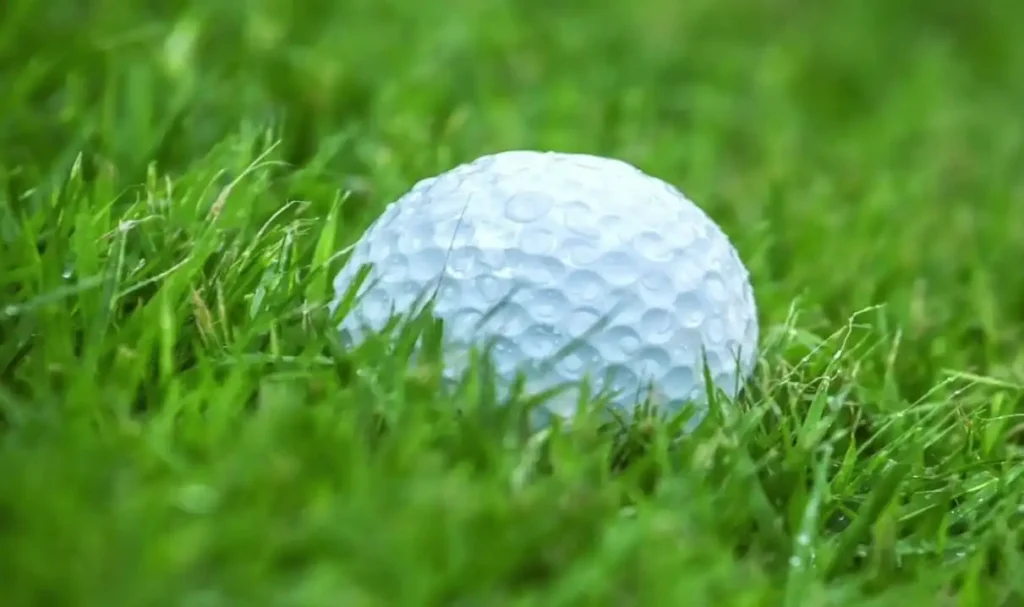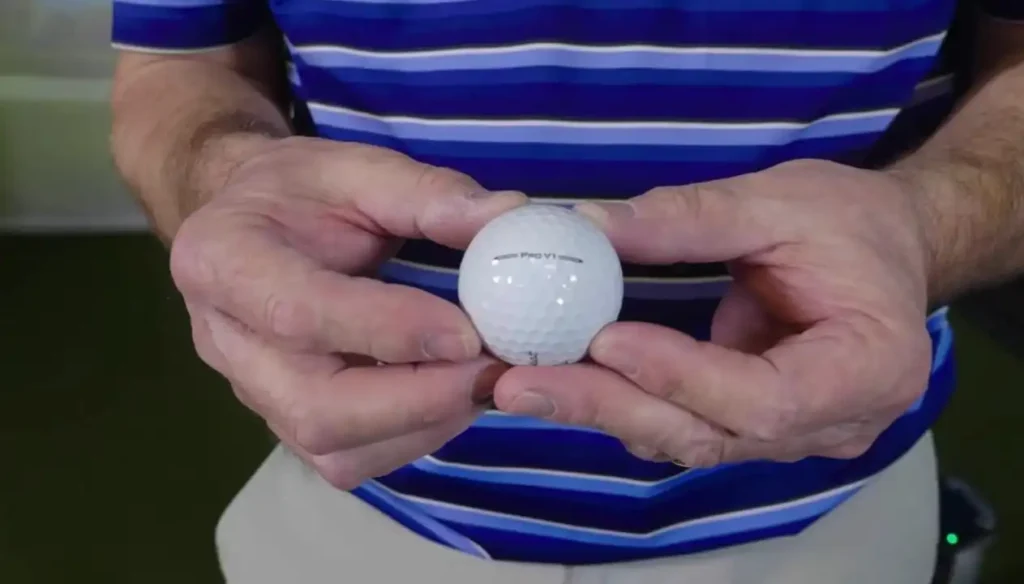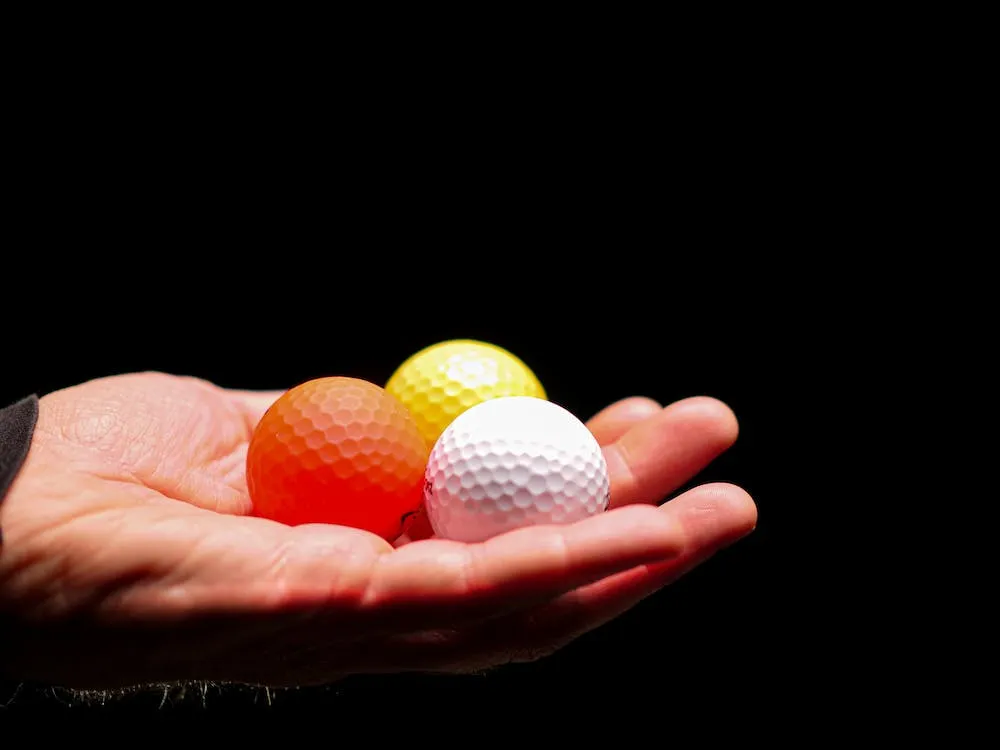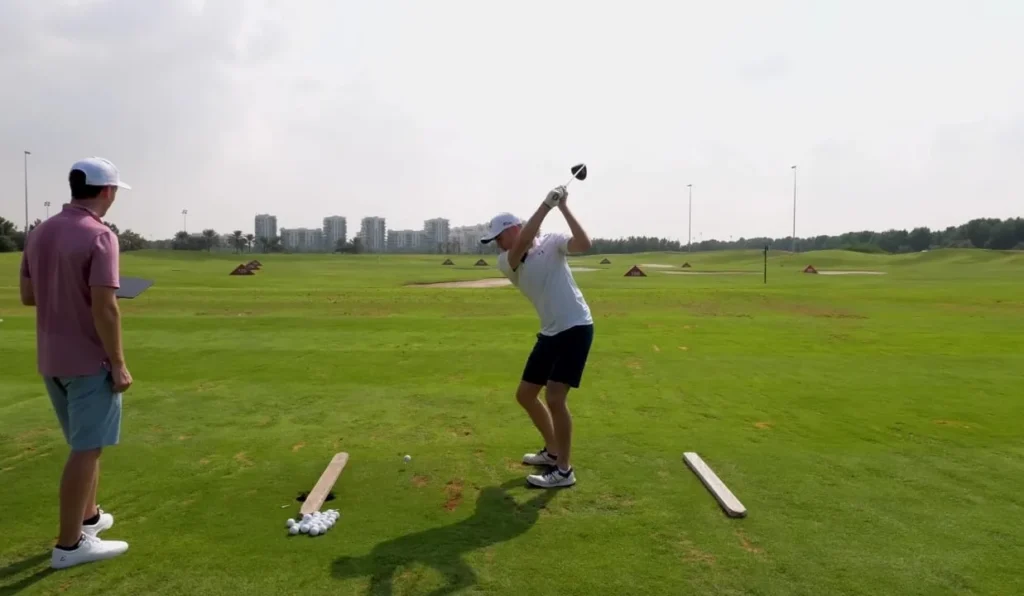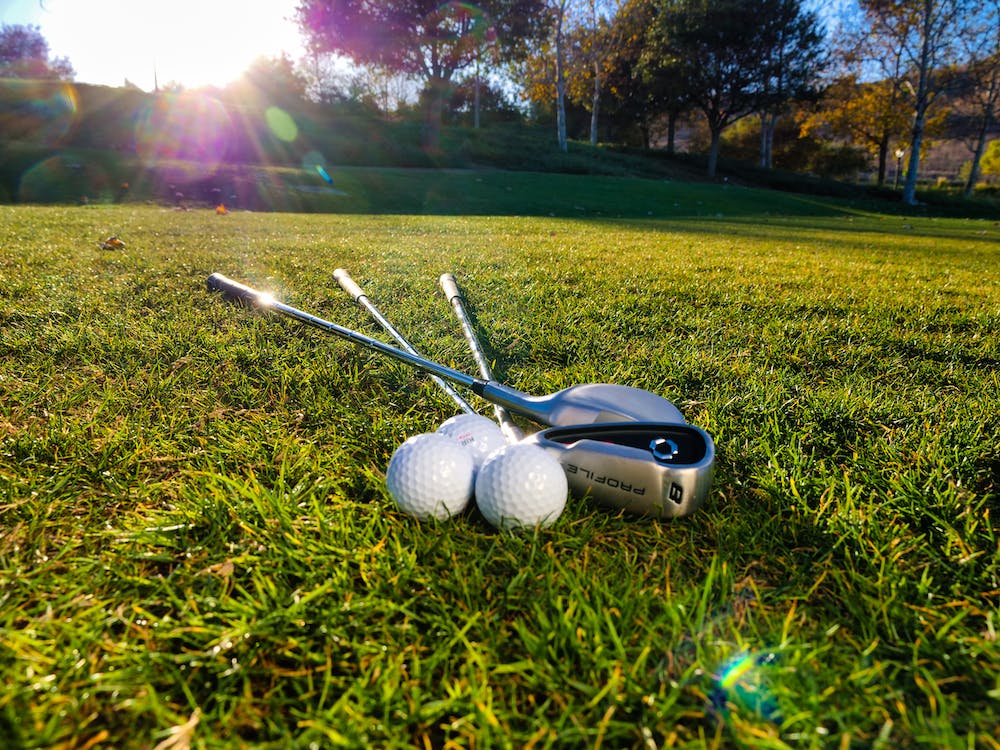Golfers are often looking for new ways to make their golf balls fly faster and cover longer distances. We know that different weather conditions affect your game differently. So, what’s the relationship between humidity and golf ball distance? This question bothers many golfers, chiefly the not-so-seasoned ones, as apparent from the social media posts made by greenhorns all the time. Moreover, many amateur websites respond to this question differently and golfers are met with two very different answers. However, we’re going to explain exactly how humidity and golf balls are related. How does humidity affect golf ball distance? Let’s find out!

DOES HUMIDITY AFFECT GOLF BALL DISTANCE?
How do different weather conditions affect golf ball distance?
We know that humidity and golf ball flight are interconnected. But we also know that many other factors influence golf ball distance as well. Here’s a breakdown of the seven most vital factors every greenhorn should be familiar with when playing golf:
Temperature
Cold weather
When it’s cold, golf balls become denser, leading to less compression upon impact. They feel harder and cover less distance due to increased drag.
Hot weather
On the other hand, hot weather makes golf balls more elastic, allowing for greater compression and distance. Hot and humid climates help golf balls cover more distance.
Wind
Headwind
Headwind blows from directly in front of you. Therefore, facing a headwind will increase air resistance, causing the ball to lose distance.
Tailwind
Tailwind blows from behind you, reducing air resistance and making the golf ball travel further. However, amateur golfers may overshoot the target due to tailwinds.
Humidity
High humidity
So, does humidity affect golf ball distance on the grass? We’ll discuss this one in detail in the next section. That’s where we’ll explain the curious link between golf ball distance and humidity.
Altitude
Higher altitude
At higher altitudes, the air is less dense, which means less air resistance. Golf balls can travel farther in higher-altitude locations compared to sea level.
Rain
Wet conditions
There’s a very obvious reason why golf, cricket, and soccer aren’t meant to be played when it’s raining cats and dogs outside. Rain-soaked fairways and greens can reduce roll and may affect a ball’s distance. The ball might not travel as far on wet grass.
Barometer pressure
High pressure
When the air pressure is high, you should expect fair weather and lower air density. Your golf ball will fly slightly farther in high-pressure conditions.
Low pressure
On the other hand, low-pressure systems often bring stormy weather and higher air density. This can result in reduced distance for golf shots.
Sunny vs overcast
When it’s sunny outside, you’ll play a livelier game and cover longer distances. However, when it’s overcast, you’ll face less ball compression and shorter distances.
So, does humidity affect golf ball distance? Yes, it does, and so do many other factors. As we have just seen, different weather conditions alter factors like air density, ball compression, and air resistance. Seasoned golfers study these factors and choose the right pieces of golfing equipment to improve their game.

What’s the link between golf ball distance and humidity?
So, is there a relationship between humidity and golf balls? If the answer is in the affirmative then how much does humidity affect golf ball distance? We can answer this question more accurately by looking at four factors that change for golf balls due to humid conditions:
Air density
Here’s what happens when the air becomes too humid; humidity reduces air density. Since golf balls rely on air resistance for lift and carry less dense air leads to less resistance. It means that humid conditions reduce drag for golf balls, letting them cover longer distances.
Ball compression
As you’ve seen from our previous posts, golf balls have different levels of compression; all these levels of compression determine how much the ball will compress upon impact. So, when the air becomes too humid, it compresses very easily because the air is now softer. As a result, lower compression ratings make the air travel farther.
Grip and control
In humid conditions, added moisture makes golf club grips and hands slick. So, a golfer’s grip and control over the club may be affected, leading to off-center hits or decreased accuracy. It can offset the gains in distance. So, while the above two factors make golf balls go farther in humid conditions, this one makes golf balls travel slower.
Ball behavior
The behavior of your golf ball also changes with changes in the weather. That’s especially true if the golf ball has been stored in humid conditions for a long time. The golf ball will absorb a lot of moisture, affecting its weight and balance. That’s how the flight characteristics of the golf ball are affected.
In short, we can conclude that there exists a favorable relationship between humidity and golf ball distance. When it’s too humid outside, the air becomes less dense, which, in turn, decreases air resistance. A golf ball will experience less drag due to too much humidity as it moves through the air. The golf ball can easily maintain its speed and carry farther. However, it is important to notice that other factors, such as wind and temperature, play a significant role in determining the distance your golf ball will travel.
Tips to improve your game when it’s too humid outside
Some golfers find it a bit challenging to play golf when it’s humid outside. But you can improve your game by leaps and bounds with these simple tips:
Stay hydrated
Drink water constantly to prevent exhaustion. Humid weather easily makes you fatigued so you need to constantly drink water to maintain focus and stay sharp on the ground.
Wear suitable clothes
It’s important to stay cool and comfy when it’s too humid outside. So, wear lightweight, moisture-wicking garments so your sweat evaporates quickly.
Grip maintenance
Sweaty hands make it harder to grab your golf club and lead to club slippage. That’s a brutal link between humidity and golf balls. So, keep a towel with you to dry your hands constantly.
Club selection
How much does humidity affect golf ball distance in terms of rolling? When discussing the link between humidity and golf ball flight, bear in mind that golf balls may not roll as far on the fairways in humid conditions. The solution is to choose golf clubs with slightly more loft.
Adjust your swing
When humidity affects golf ball distance, it does harm ball flight in one aspect i.e., your swing speed. Try to make minor adjustments to your swing and ball position. That’s how you can make the most out of humid conditions.
Maintain your focus
Even though there exists a friendly relationship between golf ball distance and humidity, hot and humid conditions can be difficult for you mentally. It can be mentally draining so you must stay focused. Practice mindfulness by taking deep breaths to focus on your game properly.
Sun protection
How much does humidity affect golf ball distance in the long run? Well, humid conditions often come with sunny weather. So, wear sunscreens, sunglasses, and a wide-brimmed hat to protect yourself.
Pace yourself
Don’t rush your shots, instead, take your time and make smooth, deliberate shots. That’s how you can maintain control and improve your gaming style.
Ball selection
The connection between humidity and golf ball distance will influence ball selection. Use a golf ball fit for humid conditions and that’s how you can improve your game.
Know your limits
There’s no need to overexert yourself; when heat and humidity become too much for you, you should put a stop to your game. Take breaks, seek shade when necessary, and prioritize your well-being.
That’s how you can enhance your golf game and become a far better player.
Golf Toys for Humid Condition
Don’t let humid conditions discourage you from showing off your golf skills on the green. Check out these products to help you out in humid climate/atmosphere. We have golf towels to wash your face with, longer irons to resist slipping, and low-compression golf balls to cover an impressive distance in unfavorable conditions. You should compare the pros and cons of these products, check out the latest comments by users, and check out the images of the products before investing in anything. That’s how you can buy the right thing to improve your skills. Amazon has the best collection of humidity-resistant items:
| Titleist Tour Soft, Low Compression golf Balls | More Information |
| Vice Pro Plus Golf Balls, surlyn covered golf balls | More Information |
| 2023 Srixon ZX Mk II Utility longer irons | More Information |
| Golf Towels | More Information |
| Cross Corded Golf Grips | More Information |

Conclusion
In the end, here’s what we know about the relationship between golf ball distance and humidity. Yes, golf balls cover longer distances when it’s humid outside. It’ll happen because humid air is denser, making it harder for air to move around the ball. Therefore, a golf ball travels further in humid conditions (provided the temperature remains the same). Scientists argue that humid air contains water vapors along with nitrogen and oxygen; as water vapors are made up of oxygen and hydrogen (the lightest of all gases), a golf ball will travel further. That’s the science behind how humidity and golf ball flight are interrelated. And how much does humidity affect golf ball distance? Well, not much. Golf balls only cover slightly more distances in humid conditions.
FAQs – Does Humidity Affect Golf Ball Distance?
Does a ball travel further in cold or hot weather?
Humidity seems to be a golf ball’s favorite environment. Imagine it’s a hot and humid day on the golf course. The air is thick with moisture, setting your ball off on a grand journey. As humid air is less dense than dry or dense air, your ball has minimal resistance from its surface area. So, if you find yourself playing on such an afternoon, expect your golf ball to travel a bit further.
Does a golf ball travel farther in cold or warm weather?
As many have noted, golf balls appear to prefer hot conditions; air molecules tend to become excited in hotter environments than humid ones, creating less dense air which in turn results in reduced drag on your ball’s journey. So, golf balls cover more distance when it’s hot outside.
How does barometric pressure affect a golf ball?
Weather systems can have an enormous impact on how a golf ball flies; fair weather with lower air density is your ticket to flying further distances than low-pressure systems due to stormy conditions leading to increased air density limiting its travel distances. Conversely, low-pressure systems bring stormy conditions along with them which leads to an increase in air density that limits how far your golf ball may travel.
Do objects move faster in humid air?
Humid air is lighter than dry air at the same temperature and pressure. When moisture is added to dry air, the lighter water molecules displace heavier nitrogen and oxygen molecules. This makes the air less dense, which means objects encounter less resistance as they move through it. Air resistance is called “drag,” and it increases with air density. More dense, or “heavier” air will slow down objects moving through it more.
Does humidity affect projectiles?
No matter if it’s a golf ball or any other object you’re launching, humidity must always be considered when considering its launch distance and impact. When air density decreases during humid conditions, air resistance decreases leading to greater projectile flight distances. Science says that air with a high degree of moisture is denser than dry air because a water molecule weighs less than a dry air molecule.
How does humidity impact the flight of a golf ball?
Humidity can decrease air density, which can make shots longer. This is because water vapor is lighter than dry air. In dry air, a golf ball travels through nitrogen and oxygen. In humid air, the ball travels through hydrogen and oxygen. Hydrogen is the lightest gas, so more humidity can cause the ball to travel further.
Is there an optimal humidity level for maximizing golf ball distance?
No, the optimal humidity level for maximizing golf ball distance is negligible. According to Trackman, a change from 10% to 90% humidity will account for less than a yard of difference on a 6-iron. That’s because of the following factors:
- Humidity decreases air density
- Humid air is lighter than dry air at the same temperature and pressure
- Water vapor is made up of oxygen and hydrogen
- Hydrogen is the lightest gas of them all
Can high humidity cause a golf ball to travel shorter distances?
Humidity reduces air density because water vapor is lighter than dry air. This means that a golf ball will fly farther when it’s humid. Other weather conditions that can affect a golf ball’s distance include temperature, elevation, and wind.
Are there specific adjustments golfers should make to their game in humid conditions?
Try swinging at 80-90% instead of 100% or more to focus on the ball and solid contact. Because the ground is soft, your feet will sink into the turf when you address the ball, lowering the bottom of your swing arc. Highly humid conditions may affect the grip on the club and the ball’s surface.
Does humidity affect the performance of different types of golf balls?
Humidity can affect how golf balls behave in the air. For example, shots with less spin may be more likely to slice, leading to inaccurate shots. Moisture on the ball or club face can lead to less predictability and reduced consistency. A drop in backspin means a rise in carry. In humid air, the golf ball travels further because hydrogen is the lightest gas.

